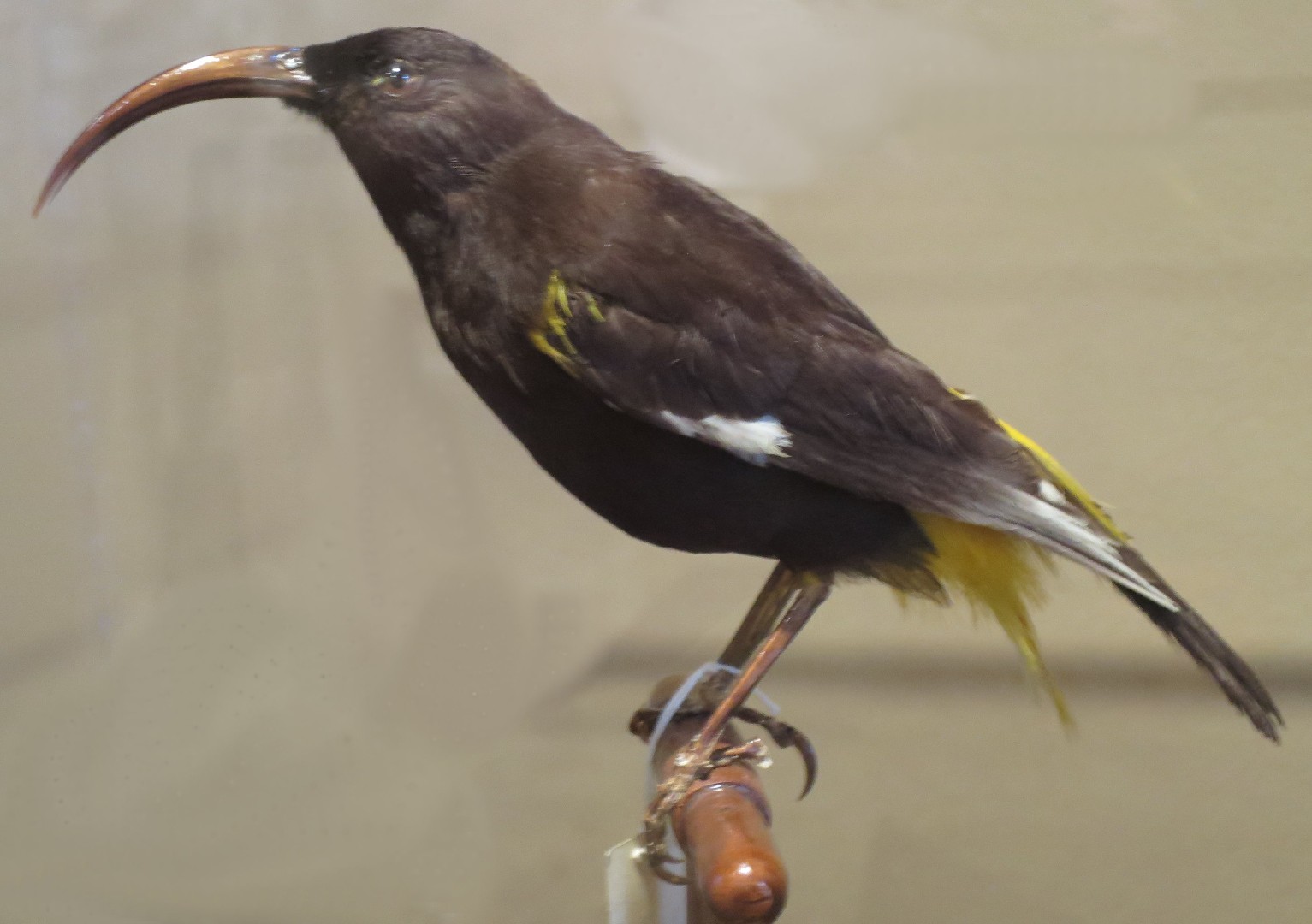Hawaii Mamo
A species of Mamo and ʻiʻiwi Scientific name : Drepanis pacifica Genus : Mamo and ʻiʻiwi
Hawaii Mamo, A species of Mamo and ʻiʻiwi
Botanical name: Drepanis pacifica
Genus: Mamo and ʻiʻiwi
Content
Description General Info
Description
This bird averaged 9 inches (22.86 cm) in length. It was mostly black with bright yellow feathers on its rump, undertail coverts, shoulders, and legs. There was a white patch on the primaries. It had small, black eyes and was the centerpiece of portraits. It had a slightly decurved blackish bill, some three inches long. Juveniles may have been brown. This shy species lived in the forest canopy and fed on lobelia nectar, from the plant's curved, tubular flowers. Its call was a long, plaintive whistle. 
General Info
Species Status
The birds were also popular with European collectors. European settlers changed the mamo's habitat to support agriculture and cattle ranching, which damaged the bird's food source. The cattle roamed loose in the forests, destroying the understory ecosystem. Even though this was discovered early and was well known to the Hawaiians, the mamo quickly disappeared. Introduced disease may have killed any birds that survived habitat destruction. There are many specimens of this bird in American and European museums. The bird seemed to disappear in 1899, but reports of this bird continued for a few more years. The last confirmed sighting was in July 1898 near Kaumana on the island of Hawaiʻi by a collector, Henry W. Henshaw, who, as mentioned by Tim Flannery in his book, A Gap In Nature, shot and wounded a bird he was stalking, before it escaped with another bird. And the last bird was shot in 1898. 
Scientific Classification
Phylum
Chordates Class
Birds Order
Perching birds Family
Finches Genus
Mamo and ʻiʻiwi Species
Hawaii Mamo 